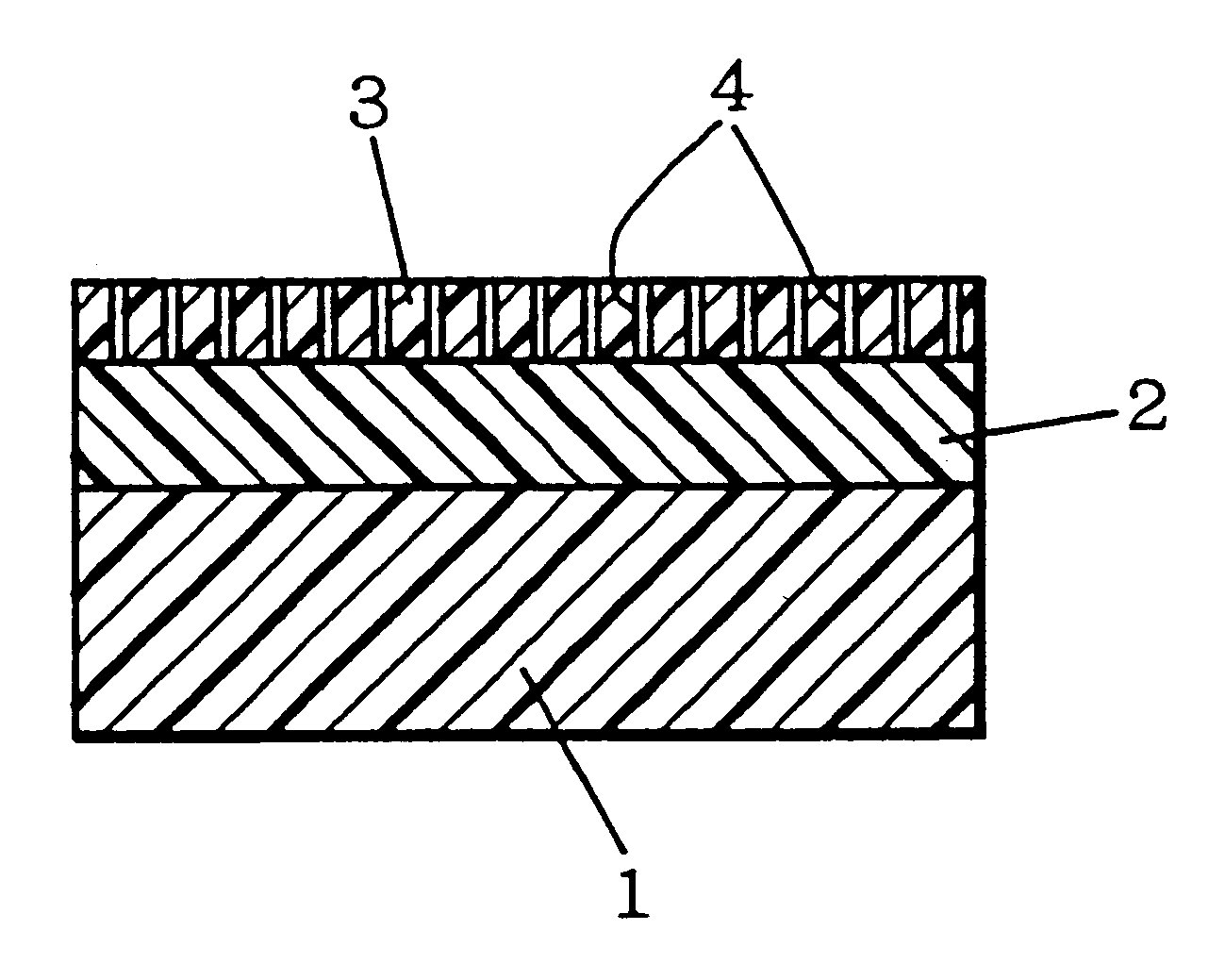Porous films, process for producing the same, and laminate films and recording sheets made with the use of the porous films
- Summary
- Abstract
- Description
- Claims
- Application Information
AI Technical Summary
Benefits of technology
Problems solved by technology
Method used
Image
Examples
example 1
A dope was prepared by adding 23.8 parts by weight of cyclohexanol to 100 parts by weight of an 8% (by weight) solution of cellulose acetate (degree of acetylation 55%, viscosity average degree of polymerization 170) in methylcellosolve with well stirring. The dope was applied to a release paper in such a manner as to give a 30 .mu.m layer after dried. The coated paper was dried at 35.degree. C. and 90% RH for 5 minutes and further dried at 100.degree. C. for 2 minutes. The film peeled off from the release paper was a porous film having a mean pore size of 0.08 .mu.m and a porosity of 32%. The light transmittance was 82%, indicating high transparency of the film.
example 2
A dope was prepared by adding 4.8 parts by weight of cyclohexanol to 100 parts by weight of a 10% (by weight) solution of cellulose acetate (degree of acetylation 55%, viscosity average degree of polymerization 180) in methylcellosolve with well stirring. The dope was applied to a release paper in such a manner as to give a 50 .mu.m layer when dried. The coated paper was dried at 25.degree. C. and 90% RH for 10 minutes and then dried at 120.degree. C. for 3 minutes. The film peeled off from the release paper was a porous film having a mean pore size of 0.10 .mu.m and a porosity of 45%. The light transmittance was 73%, indicating high transparency of the film.
example 3
A dope was prepared by adding 13.7 parts by weight of 4-methylcyclohexanol to 100 parts by weight of an 8% (by weight) solution of cellulose acetate (degree of acetylation 55%, viscosity average degree of polymerization 170) in methylcellosolve with well stirring. The dope was applied to a release paper in such a manner as to give a 30 .mu.m layer when dried. The coated paper was dried at 25.degree. C. and 90% RH for 5 minutes and further dried at 120.degree. C. for 3 minutes. The film peeled off from the release paper was a porous film having a mean pore size of 0.07 .mu.m and a porosity of 33%. The light transmittance was 81%, indicating high transparency of the film.
PUM
| Property | Measurement | Unit |
|---|---|---|
| Fraction | aaaaa | aaaaa |
| Fraction | aaaaa | aaaaa |
| Fraction | aaaaa | aaaaa |
Abstract
Description
Claims
Application Information
 Login to View More
Login to View More - R&D
- Intellectual Property
- Life Sciences
- Materials
- Tech Scout
- Unparalleled Data Quality
- Higher Quality Content
- 60% Fewer Hallucinations
Browse by: Latest US Patents, China's latest patents, Technical Efficacy Thesaurus, Application Domain, Technology Topic, Popular Technical Reports.
© 2025 PatSnap. All rights reserved.Legal|Privacy policy|Modern Slavery Act Transparency Statement|Sitemap|About US| Contact US: help@patsnap.com


